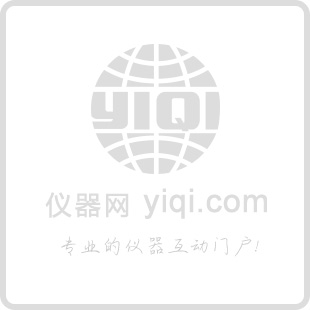博莱霉素溶液 ,10mg/mL1mL图片柱式DNA提取系列产品
2 柱式RNA提取系列(包括动物,血液,植物,细菌RNA提取)
3 5分钟超快DNA电泳液
4 一步式质粒DNA提取系列产品
5 “绿如蓝”DNA染料
6 固相RNase清除剂
博莱霉素溶液 ,10mg/mL1mL图片实验步骤:
1.从少量样品(1-10mg组织或102-104细胞)中提取RNA时可加入少许糖原以促进RNA沉淀。例如加800ml TRIzol匀浆样品,沉淀RNA前加5-10μg RNase-free糖原。糖原会与RNA一同沉淀出来,糖原浓度不高于4mg/ml是不影响一链的合成,也不影响PCR反应。
2.匀浆后加之前样品可以在-60至-70℃保存至少一个月。RNA沉淀可以保存于75% 酒精中2-8℃一星期以上或-5至-20℃一年以上。
3.分层和RNA沉淀时也可使用台式离心机,2600×g离心30-60分钟。
博莱霉素溶液 ,10mg/mL1mL图片的详细介绍:

博莱霉素溶液 ,10mg/mL1mL图片操作步骤:
1. 匀浆处理:a.组织 将组织在液氮中磨碎,每50-100mg组织加入1ml TRIzol,用匀浆仪进行匀浆处理。样品体积不应超过TRIzol体积10℅。
b.单层培养细胞 直接在培养板中加入TRIzol裂解细胞,每10cm2面积(即3.5cm直径的培养板)加1ml,用移液器吸打几次。TRIzol的用量应根据培养板面积而定,不取决于细胞数。TRIzol加量不足可能导致提取的RNA有DNA污染。
c.细胞悬液 离心收集细胞,每5-10×106动物、植物、酵母细胞或1×107细菌细胞加入1ml TRIzol,反复吸打。加TRIzol之前不要洗涤细胞以免mRNA降解。一些酵母和细菌细胞需用匀浆仪处理。
2.将匀浆样品在室温(15-30℃)放置5分钟,使核酸蛋白复合物完全分离。
3.可选步骤:如样品中含有较多蛋白质,脂肪,多糖或胞外物质(肌肉,植物结节部分等)可于2-8℃10000×g离心10分钟,取上清。离心得到的沉淀中包括细胞外膜,多糖,高分子量DNA,上清中含有RNA。处理脂肪组织时,上层有大量油脂应去除。取澄清的匀浆液进行下一步操作。
5. 每使用1ml TRIzol加入0.2ml,剧烈振荡15秒,室温放置3分钟。
6. 2-8℃10000×g离心15分钟。样品分为三层:底层为黄色有机相,上层为无色水相和一个中间层。RNA主要在水相中,水相体积约为所用TRIzol试剂的60℅。
7. 把水相转移到新管中,如要分离DNA和蛋白质可保留有机相,进一步操作见后。用异丙醇沉淀水相中的RNA。每使用1ml TRIzol加入0.5ml异丙醇,室温放置10分钟。
8. 2-8℃10000×g离心10分钟,离心前看不出RNA沉淀,离心后在管侧和管底出现胶状沉淀。移去上清。
9. 用75℅乙醇洗涤RNA沉淀。每使用1ml TRIzol至少加1ml 75℅乙醇。2-8℃不超过7500×g离心5分钟,弃上清。
10.室温放置干燥或真空抽干RNA沉淀,大约晾5-10分钟即可.不要真空离心干燥,过于干燥会导致RNA的溶解性大大降低。加入25-200μl无RNase的水或0.5℅SDS,用枪头吸打几次,55-60℃放置10分钟使RNA溶解.如RNA用于酶切反应,勿使用SDS溶液。RNA也可用100℅的去离子甲酰胺溶解,-70℃保存。
公司的产品目前有下面10个系列,5000余种产品
1、RNA纯化系列产品
2、DNA纯化系列产品
3、电泳及回收系列产品
4、探针标记及检测系列产品
5、核酸扩增系列产品
6、克隆表达系列产品
7、基因组研究系列产品
8、蛋白质研究系列产品
9、细胞生物学研究系列产品
10、即用型溶液、质粒库、菌种库等等
TREM2 Protein Human 重组人 TREM2 蛋白 (His 标签)
RSPO1 Protein Human 重组人 R-Spondin 1 / RSPO1 蛋白 (His 标签)
INSR Protein Human 重组人 Insulin Receptor / INSR / CD220 蛋白 (long isoform, His 标签)
GSK3B Protein Human 重组人 GSK3B 蛋白 (His 标签)
MAPK8 Protein Human 重组人 JNK1 / MAPK8 蛋白 (GST 标签)
NCR3 Protein Human 重组人 NCR3 / NKp300 蛋白 (His 标签)
CDH2 Protein Human 重组人 N-Cadherin / CD325 / CDH2D 蛋白 (His 标签)
ICAM1 Protein Human 重组人 ICAM-1 / CD54 蛋白 (His 标签)
CPE Protein Human 重组人 Carboxypeptidase E / CPE 蛋白 (His 标签)
PDGFRA Protein Human 重组人 PDGFRa / CD140a 蛋白 (His 标签)
MAPK14 Protein Human 重组人 p38 alpha / MAPK14 蛋白 (His 标签)
ERBB2 Protein Human 重组人 HER2 / ErbB2 蛋白 (His 标签)
BMP2 Protein Human 重组人 BMP-2 / BMP2A 蛋白
myeloid leukemias in mice. In more recent studies CBL has been shown to be a negative regulator of tyrosine kinase signaling. The ubiquitin ligase activity of CBL leads to the degradation of tyrosine kinases, thus attenuating the signal of receptors. Targets of CBL include activated protein tyrosine kinases belonging to the Src and Syk/Zap 70 families. An additional mechanism to attenuate receptor signaling is thought to be achieved by CBL’s interaction with downstream targets of tyrosine kinases, such as PI 3K and Vav.
Function : Adapter protein that functions as a negative regulator of many signaling pathways that are triggered by activation of cell surface receptors. Acts as an E3 ubiquitin-protein ligase, which accepts ubiquitin from specific E2 ubiquitin-conjugating enzymes, and then transfers it to substrates promoting their degradation by the proteasome. Recognizes activated receptor tyrosine kinases, including KIT, FLT1, FGFR1, FGFR2, PDGFRA, PDGFRB, EGFR, CSF1R, EPHA8 and KDR and terminates signaling. Recognizes membrane-bound HCK and other kinases of the SRC family and mediates their ubiquitination and degradation. Participates in signal transduction in hematopoietic cells. Plays an important role in the regulation of osteoblast differentiation and apoptosis. Essential for osteoclastic bone resorption. The Tyr-731 phosphorylated form induces the activation and recruitment of phosphatidylinositol 3-kinase to the cell membrane in a signaling pathway that is critical for osteoclast function.
博莱霉素溶液 ,10mg/mL1mL图片Subunit : Interacts (phosphorylated at Tyr-731) with PIK3R1. Associates with NCK via its SH3 domain. The phosphorylated C-terminus interacts with CD2AP via its second SH3 domain. Binds to UBE2L3. Interacts with adapters SLA, SLA2 and with the phosphorylated C-terminus of SH2B2. Interacts with EGFR, SYK and ZAP70 via the highly conserved Cbl-N region. Also interacts with SORBS1 and INPPL1/SHIP2. Interacts with phosphorylated LAT2. May interact with CBLB (By
 博莱霉素溶液 ,10mg/mL1mL图片
博莱霉素溶液 ,10mg/mL1mL图片
 博莱霉素溶液 ,10mg/mL1mL图片
博莱霉素溶液 ,10mg/mL1mL图片
 青霉素链霉素两性霉素B溶液 青霉素链霉素两性霉素B溶液价格
青霉素链霉素两性霉素B溶液 青霉素链霉素两性霉素B溶液价格
 青霉素链霉素两性霉素B溶液价格,青霉素链霉素两性霉素B溶液
青霉素链霉素两性霉素B溶液价格,青霉素链霉素两性霉素B溶液
 青霉素链霉素两性霉素B溶液 / 青霉素链霉素两性霉素B溶液
青霉素链霉素两性霉素B溶液 / 青霉素链霉素两性霉素B溶液
 青霉素链霉素两性霉素B溶液 / 青霉素链霉素两性霉素B溶液
青霉素链霉素两性霉素B溶液 / 青霉素链霉素两性霉素B溶液
 潮霉素 素尔潮霉素B溶液|潮霉素B溶液价格
潮霉素 素尔潮霉素B溶液|潮霉素B溶液价格
 两性霉素B溶液现货供应,进口两性霉素B溶液
两性霉素B溶液现货供应,进口两性霉素B溶液
 潮霉素B溶液现货供应,进口潮霉素B溶液
潮霉素B溶液现货供应,进口潮霉素B溶液
 两性霉素B溶液生产厂家,现货供应两性霉素B溶液(AmphotericinBl)
两性霉素B溶液生产厂家,现货供应两性霉素B溶液(AmphotericinBl)
 20mg/ml潮霉素B溶液厂家 现货供应潮霉素B溶液(HygromycinB)
20mg/ml潮霉素B溶液厂家 现货供应潮霉素B溶液(HygromycinB)
 潮霉素B溶液 20ml价格(Hygromycin B试剂)现货 进口原装潮霉素B溶液 20ml价格北京
潮霉素B溶液 20ml价格(Hygromycin B试剂)现货 进口原装潮霉素B溶液 20ml价格北京